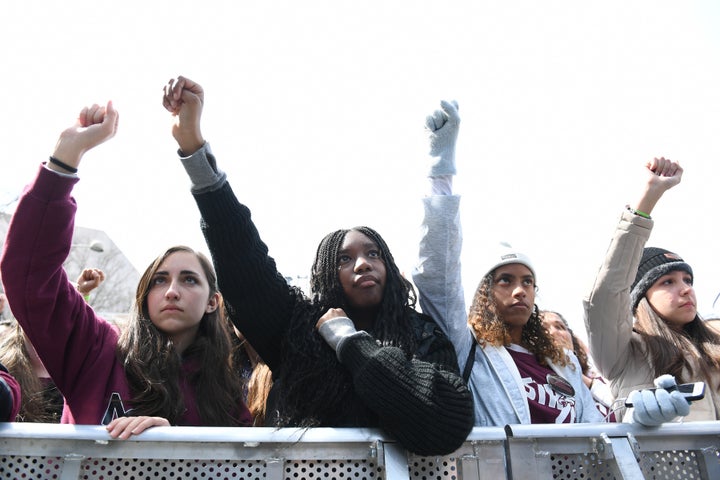
When the students of Parkland, Florida, first made headlines, the media was widely criticized for promoting the stories of white students affected by violence over those of students of color. Since then, young activists have made very well-meaning attempts to widen the conversation to include the way gun violence manifests in communities of color.
Those efforts while noble, have unfortunately only aided in further narrowing the conversation and separating communities along party and color lines. Simply put, it lacks real intersectionality. We’re experiencing a complex conversation about violence that race alone can’t explain. There are many other factors that make gun violence a problem for everyone of every background.
We know that women are affected by gun violence in all its forms. By reframing the conversation around women, in full recognition of our multiple and intersecting identities, the full scope of the problem of gun violence can be seen and intersectional advocacy can be pursued.
“We need a closer inspection into what solutions actually make women and people of color safe.”
Intimate partner violence affects women of all races, religions, ages and abilities. That violence is five times more likely to kill us if our intimate partner has access to a gun. An astounding 4.5 million women in America reported that an intimate partner threatened them with a gun ― these are the women that lived. And yet even though this issue affects all women, the state often punishes black and brown women for being the victims of violence.
Marissa Alexander, the Florida mother who fired a warning shot into the air to scare off her abusive husband, spent almost six years under state supervision―the same state where George Zimmerman walked free under Stand Your Ground laws after shooting Trayvon Martin. In Detroit, pregnant mother Siwatu-Salama Ra sits in jail awaiting sentencing for merely brandishing a registered firearm to defend herself, her mother and her 2-year-old daughter from an attack.
Mothers of black and brown children also have to face the very real fear that their children will not be safe from those sworn to protect and serve. The police shoot and kill almost 1,000 people a year, and the majority of those are people of color. Although white men commit most acts of mass gun violence, children of color bear the burden of those crimes with the over-policing of urban schools. The presence of police in schools has not made students safer, but it has increased arrests for students of color and video footage has also shown shocking brutality from law enforcement officers inside of schools towards students of color. One such viral video shows a teenage black girl in South Carolina being tackled and flipped upside down while sitting in her desk, simply for not putting her phone away when instructed.
Of course, gun violence homicides within communities of color are a problem that should be taken seriously. Firearm violence is eight times more likely to kill Black Americans than those who are white, and homicide by gun is the second leading cause of death among young Latinos.
All of this is why we need a closer inspection into what solutions actually make women and people of color safe and not increase their potential to be victimized.
“Diversity within advocacy groups are a requirement for real change.”
The communities that are well-known for being plagued by gun violence are also the places where people of color are creating innovative methods of conflict resolution and violence intervention. Those programs need to be funded not only to save Chicago’s Southside or East New York but to expand development as the solutions on a broader scale.
We need full transparency to prevent the co-opting of the stories of people of color. We’ve seen how organizations use the traumatic experiences of black and brown people as tools for fundraising while rarely using those funds for or in support of the minority communities that experience trauma daily. Organizations who claim to be doing the work must be held accountable, making sure that serious investments are also going into a diverse set of communities.
This is why diversity within advocacy groups is a requirement for real change. We have to create meaningful space for a wide range of stakeholders to be included in addressing and creating solutions that will help make all of our communities safer and not just a privileged few.
Just like the problem is intersectional, so too are the solutions to strengthen and protect our communities. We need to encourage our elected representatives to say no to more police in schools, which has not made students any safer. We must elect into office new candidates who aren’t afraid to reframe gun violence as a public health crisis.
Funding priorities should look like effective violence intervention and prevention programs and more support for women who experience intimate partner violence. Only when the decision-making tables are truly reflective of the many communities that make up America will our policy solutions be truly reflective of the many manifestations of this terrible problem.
Carmen Perez is the executive director of The Gathering for Justice and National Co-Chair of Women’s March and Jamira Burley is a social justice advocate and community engagement consultant.